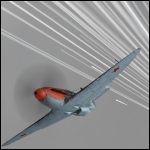
Re: detail brushes
Posted by ReNo on
Wed Jan 12th 2005 at 7:21pm
 ReNo
ReNo
member
5457 posts
1991 snarkmarks
Registered:
Aug 22nd 2001
Occupation: Level Designer
Location: Scotland
Detail brushes are perfectly safe, but you shouldn't just use them all
over the place. Its important to learn where they are suitable for use,
and where they are not. What stage of your compile is taking so long to
run? If it is VIS, which I'd assume it is, then you will almost
certainly be able to use detail brushes to cut that down. As a short
reply, you ought to use detail brushes for complex or small pieces of
brushwork, that do not really block the visibility of the player and do
not contribute to the outer hull of the map. Try looking for info on
func_walls for HL1, as their main use was the same as the new
func_detail for source.

Re: detail brushes
Posted by ReNo on
Wed Jan 12th 2005 at 8:01pm
 ReNo
ReNo
member
5457 posts
1991 snarkmarks
Registered:
Aug 22nd 2001
Occupation: Level Designer
Location: Scotland
I think you need to do a little reading up on what the compile tools actually do.
Basically, VIS splits the map up into convex sections known as leafs.
From each of these leafs, it figures out what other leafs might be
visible. Everything in the potentially visible leafs is rendered, even
if it is actually hidden behind a wall or something.
A leaf has its boundaries on world brushes, and as mentioned, it has to
be convex in shape. Therefore, if you had a simple box room with no
contents, it could be made up of only a single leaf. If you then added
in a thin cylindrical pillar to the centre of the room, then the number
of leafs would increase drastically. This in turn would increase
compile time during VIS, as it would have to calculate for each of
these leafs, what leafs are potentially visible. The benefits of this
are negligable in these circumstances - even if one or two leafs were
culled at any given time, chances are the performance increase in game
would be next to nothing. In this scenario you would turn the pillar
into a func_detail as this means it is not taken into account during
VIS, and the room could once again be made up of only a single leaf.
Meh, that probably isn't overly clear, I might write up a tutorial on the topic if I can be bothered.

Re: detail brushes
Posted by ReNo on
Wed Jan 12th 2005 at 8:45pm
 ReNo
ReNo
member
5457 posts
1991 snarkmarks
Registered:
Aug 22nd 2001
Occupation: Level Designer
Location: Scotland
Unless my knowledge on this topic has always been flawed, entity
brushes do not start adding to epoly as opposed to wpoly - only models
contribute to epoly counts. The truth behind this is redundant in HL2
editing anyway though - detail brushes act exactly like world brushes,
bar the fact they do not cause face splitting and do not block VIS.
In my opinion, much of that tutorial (or at least what you posted of it) is incorrect, or at least I disagree with most of it.

Re: detail brushes
Posted by Yak_Fighter on
Wed Jan 12th 2005 at 10:35pm
Posted
2005-01-12 10:35pm
1832 posts
742 snarkmarks
Registered:
Dec 30th 2001
Occupation: College Student/Slacker
Location: Indianapolis, IN
I sound like a broken record, but detail brushes can cause face splitting in certain situations. Basically if the vertexes of a func_detail touch the edges of a natural face split between two brushes they will cause additional face splitting on both brushes.
EDIT: my little ascii drawings didn't work
Now func_detail does a perfectly fine job of reducing compile times, so if that's all you're worried about go nuts. But if you are trying to optimize your map and reduce world rendering (face splitting increases this to my knowledge) you need to be careful how you use the detail brushes, as you may not be accomplishing anything on that front.

Re: detail brushes
Posted by omegaslayer on
Fri Jan 14th 2005 at 1:04am
2481 posts
595 snarkmarks
Registered:
Jan 16th 2004
Occupation: Sr. DevOPS Engineer
Location: Seattle, WA
I dont know what Yak is talking about (although im sure its true), all
I can say is type in "mat_wireframe 3" to see the BSP cuts, and to see
if a detail does cut up faces.

